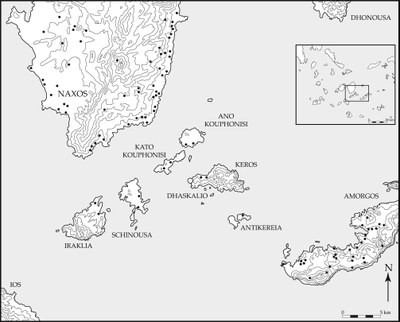Remarkable 4,500-year-old engineering feats discovered on ancient Greek 'pyramid' island
Skilled builders carved terrace walls into a rocky headland on Keros, creating a 'pyramid' structure.

New excavations on the remote Greek island of Keros have uncovered evidence of spectacular feats of engineering and monumental architectural works that, researchers say, make it one of the most impressive archaeological sites in the Aegean.
The island features a natural, pyramid-shaped, rocky headland – known as the promontory of Dhaskalio – which is covered in "remarkable" constructions. Around 4,500 years ago, skilled builders carved massive terrace walls into the natural rock, making the promontory look like a man-made stepped pyramid.
On the flat surfaces created by the terraces, they constructed impressive, gleaming structures using around a thousand tonnes of stone, painstakingly imported from the island of Naxos.
And hidden underneath the rocky 'pyramid', archaeologists found a complex network of drainage tunnels – which predate the advanced indoor plumbing of the Mycenaean palace in Knossos by a thousand years. It is unclear at present, if this system was designed for sewage or fresh water.
Furthermore, they uncovered evidence of advanced metalworking, including two workshops, a lead axe and fragments of metalworking equipment.
The promontory of Dhaksalio is now essentially a tiny islet due to the rising sea level. However, 4,500 years ago it was attached via a narrow causeway to Keros – which, according to previous research, was a maritime sanctuary, centre of power and pilgrimage destination where mysterious rituals took place involving broken marble objects.

The island – once part of the so-called Cycladic civilisation – is known for its thousands of strange, flat-faced marble statues, which inspired the work of artists such as Pablo Picasso and Henry Moore.
According to Colin Renfrew from the University of Cambridge, who served as co-director of the excavation, Dhaksalio "may have become a focus because it formed the best natural harbour on Keros, and had an excellent view of the north, south and west Aegean".
Dhaskalio is now a deserted and protected site, but 4,500 years ago it was densely populated. However, evidence suggests it was unlikely to have been self-sufficient, meaning maintaining the settlement would have taken a great communal effort. Food, stone and ore for metalworking would all needed to be imported.
"What we are seeing here with the metalworking and in other ways is the beginnings of urbanisation: centralisation, meaning the drawing of far-flung communities into networks centred on the site, intensification in craft or agricultural production, aggrandisement in architecture, and the gradual subsuming of the ritual aspects of the sanctuary within the operation of the site," said Michael Boyd from the University of Cambridge, co-director of the excavation.
"This gives us a clear insight into social change at Dhaskalio, from the earlier days where activities were centred on ritual practices in the sanctuary to the growing power of Dhaskalio itself in its middle years," he said.




















